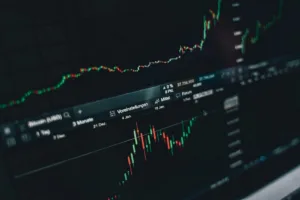
Indiana-based pharmaceutical research company Inotiv has confirmed a significant ransomware attack that encrypted its systems, disrupting business operations and access to critical internal data and applications1. The incident, discovered on August 8, 2025, was claimed by the Russia-based Qilin ransomware gang, which also alleges to have exfiltrated 176 GB of data, including a decade’s worth of research1. This attack is part of a broader, escalating trend of cyberattacks targeting the healthcare and pharmaceutical sectors, where the combination of highly sensitive data and critical operational technology presents a high-value target for threat actors.
The immediate impact on Inotiv’s operations has been substantial. The company reported that the encryption of its systems forced a shift to “offline alternatives” to maintain some level of functionality, though it has not provided a timeline for the full restoration of its IT infrastructure1. For a company that reported $374.9 million in earnings for the first three quarters of the fiscal year, the financial ramifications of this operational halt, while currently unknown, could be severe1. The nature of pharmaceutical research involves continuous, time-sensitive experiments and data analysis; any prolonged interruption can result in significant financial loss and set back research timelines by months or even years.
Qilin Ransomware Group’s Modus Operandi
The Qilin ransomware group, which has claimed responsibility for this attack, is a known and active threat to the healthcare sector. Their involvement signals a calculated targeting of high-stakes environments. This group was responsible for the June 2024 attack on Synnovis, a UK pathology services provider, which had severe real-world consequences, including the cancellation of medical procedures and a contribution to a patient death1. Qilin’s tactics extend beyond healthcare; they have also successfully targeted government entities and a major U.S. newspaper chain, demonstrating a versatile and dangerous capability1. Their prominence is underscored by intelligence indicating they were the most active ransomware group in July 2025, claiming over 70 victims4.
Qilin operates on a ransomware-as-a-service (RaaS) model, typical of many modern cybercriminal enterprises. This model involves developers creating and maintaining the ransomware code, which is then distributed to affiliates who carry out the attacks in exchange for a share of the profits. The double-extortion tactic—encrypting data and threatening to release stolen information—is a standard part of their playbook. The alleged exfiltration of 176 GB of data from Inotiv, purportedly containing ten years of research, is a prime example of this method, designed to maximize pressure on the victim to pay the ransom by threatening to release invaluable intellectual property.
Broader Context of Healthcare and Pharma Targeting
The attack on Inotiv is not an isolated incident but rather a single data point in a sustained campaign against the life sciences industry. Earlier this year, in April, kidney-care giant DaVita disclosed its own ransomware attack that encrypted parts of its network, forcing the implementation of interim measures and affecting operations1. Similarly, medical device manufacturer Masimo suffered a cyberattack in late April 2025 that limited its ability to process and ship orders, operating its manufacturing facilities at a reduced capacity1. These attacks highlight a dual-threat strategy: crippling operational capability and stealing sensitive data.
Perhaps the most illustrative example of catastrophic operational disruption in this sector is the 2017 NotPetya attack on Merck1. Attributed to the Russian military, the malware infected Merck’s network via a compromised Ukrainian tax software update, affecting 30,000 computers and 7,500 servers. The company’s operations were shut down for two weeks, and production of the HPV vaccine Gardasil 9 was crippled, resulting in total losses reported at approximately $1.3 billion. The U.S. government later called it “the most destructive and costly cyber-attack in history.” This historical precedent underscores the potential scale of disruption that attacks on pharmaceutical infrastructure can achieve.
The Supply Chain Vulnerability Factor
Another critical vector of attack is the pharmaceutical supply chain. A breach at a single point can have a cascading effect, compromising dozens of partners. The February 2025 cyberattack on pharmaceutical solutions giant Cencora exemplifies this risk2. The incident, which involved data exfiltration, has triggered data breach disclosures at eleven major pharmaceutical companies, including Bayer, Novartis, AbbVie, and Genentech1. The compromised data includes patient first and last names, addresses, dates of birth, health diagnoses, and medication information.
The financial and legal repercussions of such supply chain breaches are severe. In mid-August 2025, Cencora and its affiliate Lash Group settled data breach litigation related to this incident for $40 million3. This settlement highlights the growing regulatory and legal pressure for transparency and accountability following cybersecurity incidents. It also demonstrates how an attack on a third-party vendor can create massive liability for primary companies, making robust third-party risk management a non-negotiable aspect of a security program.
Relevance and Remediation for Security Professionals
For security teams, the Inotiv attack and others like it reinforce several key defensive priorities. The first is the critical importance of robust, tested, and isolated backups. The ability to restore systems without paying a ransom is the primary defense against operational disruption. Furthermore, implementing strict network segmentation can limit the lateral movement of ransomware, preventing a localized infection from becoming a company-wide catastrophe. Monitoring for data exfiltration patterns is equally important, as early detection of large, unauthorized data transfers can provide a crucial window to contain an incident before encryption begins.
Threat intelligence sharing within the healthcare and pharmaceutical sectors is also vital. Understanding the tactics, techniques, and procedures (TTPs) of groups like Qilin allows organizations to tailor their defenses. This includes monitoring for known indicators of compromise (IOCs) associated with these groups and implementing detection rules in security information and event management (SIEM) systems for related activity, such as the use of specific tools or commands associated with their attacks.
Conclusion
The ransomware attack on Inotiv by the Qilin group is a stark reminder of the persistent and evolving threat facing critical industries like pharmaceuticals. These attacks are motivated by the high value of the data held—both sensitive patient information and priceless intellectual property—coupled with the extreme pressure victims face to restore operations quickly. The trend is not abating; with the average ransom payment surging to a record $1.13 million in Q2 of 2025, the financial incentives for attackers remain powerful4. A comprehensive defense strategy, encompassing technical controls, employee training, and proactive threat hunting, is essential for organizations to protect their assets, their operations, and ultimately, the patients who rely on their products and research.
References
- J. Greig, “Pharma firm Inotiv says ransomware attack impacted operations,” The Record, 19-Aug-2025. [Online]. Available: https://www.sec.gov/Archives/edgar/data/720154/000162828025040658/notv-20250808.htm
- M. Seldon, “Cencora cyberattack triggers 11 pharma data breach notices,” HSToday, 29-May-2024. [Online]. Available: https://www.hstoday.us/subject-matter-areas/cybersecurity/cencora-cyberattack-triggers-11-pharma-data-breach-notices/
- “Cencora & The Lash Group settle data breach litigation for $40 million,” HIPAA Journal, 11-Aug-2025.
- Data Breaches Digest, 14-Aug-2025.
- “Pacific HealthWorks ransomware attack leaks 1.4 million patient records,” CyberNews, 11-Aug-2025.
- C. Kellaher, “DaVita discloses ransomware attack,” The Wall Street Journal, 14-Apr-2025.
- “Medical device maker Masimo hit by cyberattack,” The Record, 07-May-2025.






